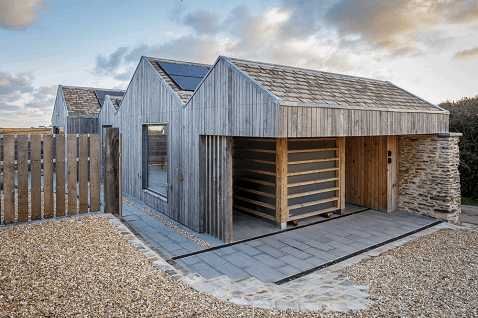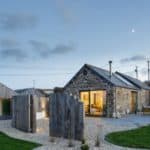No products in the cart.
Low carbon heating is the future
Heating represents 78% of non-transport energy use in the UK. Currently, only 9% of heating is powered by electricity, the majority is gas. Currently, 37% of all UK greenhouse gas emissions are generated from heating.
To meet climate change targets the UK has no option but to switch from gas, oil, and LPG to electric heating. Electric heating can be 100% CO2 free when powered by renewable electricity. The UK electricity grid is rapidly decarbonizing and within 5 years electricity will be greener than gas, oil, and LPG.
The government has already announced the banning of gas boilers in any new builds from 2025. New building regulations (SAP10.2) which are expected to come into force in Q2 2022 will be far more favorable to the use of direct-acting electric heaters. Current regulations favored gas boilers, biomass, and heat pumps.
Sustainable heating options
Gas is not a long-term option and so the only sustainable heating options in the future will be electric. New home energy legislation proposals already reflect this. The choice of low carbon heating systems are:
- Traditional electric heating, such as convector heaters and night storage. However, they waste too much energy as they heat the air;
- Electric underfloor heating is an attractive option but is too costly to run and lacks controllability;
- The only efficient solutions are Air or Ground Source Heat Pumps (ASHPs) or Herschel infrared. These are often referred to as alternative heating systems. Infrared cannot beat the theoretical efficiency of ASHP however ASHPs are central units and so suffer similar drawbacks to boiler-based central heating in that it cannot be effectively zoned. For many, it is completely impractical due to the high cost of install, ongoing maintenance, noise, and space requirement and it may struggle to provide sufficient heat in the depths of winter.
Herschel offers an unbeatable combination of efficiency, practicality and payback and is the ideal system to run alongside renewables such as solar or simply choose a renewable energy supply from your energy supplier.
Do infrared heaters save money on electricity?
It’s a simple fact that the more you do to reduce the heat loss in your house, the less energy you use to heat it. Current Building Regulations result in heat load requirements, using energy-efficient Herschel heating, of just 40-55 Watts per 100ft³. Move as far as PassivHaus standard, and heat loads of just 16-22 Watts per 100ft³ of Herschel Infrared apply. Infrared heating is efficient because most of the energy used directly replaces the heat lost from the building. In comparison, convection heaters use energy to heat volumes of air which requires higher energy use.
Converging great building design with Herschel Infrared and on or off-site renewables delivers a low carbon heating system. The increasing availability of lower-cost battery storage units moves onsite energy systems towards zero carbon.
If you’re looking for a future-proof, low-carbon heating system, don’t spend all your budget on an expensive heating system such as Air or Ground Source Heat Pumps. Instead, choose Herschel, which will allow you to allocate more of your budget to reducing the heat loss of your home and consider investing in on-site renewables.

What makes Herschel Infrared heating low carbon heating?
There is an increasing number of Energy Suppliers who offer 100% renewable electricity at competitive rates. By choosing one of these providers, you will be running your Herschel system on a completely carbon-free and sustainable basis.
If you can add your own on-site generation, such as solar PV, with the right system you will be able to self use some of your electricity generated to offset your energy bill.
Fitting solar panels to your roof fixes the cost of electricity at 11c to 16c for the next 25 years, already cheaper than the grid. Both infrared and solar are relatively simple to design and install, have ultra-low maintenance requirements (infrared is a solid-state with no moving parts so zero maintenance), and enjoy a long operational life.
Register for Herschel Updates and receive our whitepaper on How Herschel Infrared Integrates with Solar PV and renewables.




